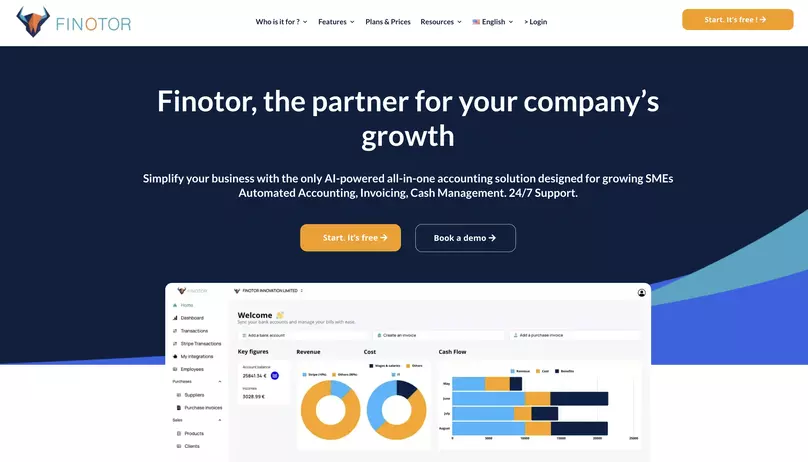Contents
- 1 Understanding Gross Profit Basics
- 2 Calculating Gross Profit: The Formula
- 3 Improving Gross Profit Margins
- 4 Analyzing Gross Profit: Metrics and Tools
- 5 Calculating Gross Profit: The Formula
- 6 Improving Gross Profit Margins
- 7 Analyzing Gross Profit: Metrics and Tools
- 8 Improving Gross Profit Margins
- 9 Analyzing Gross Profit: Metrics and Tools
- 10 Analyzing Gross Profit: Metrics and Tools
Understanding Gross Profit Basics
Defining Gross Profit in Business
Gross profit is a critical metric in accounting and finance, representing the difference between revenue and the cost of goods sold (COGS). It’s an essential indicator of a company’s financial health and efficiency at managing its production costs. In essence, gross profit measures how well a company is using its resources to produce goods and services before accounting for additional expenses like salaries, utilities, and taxes.
The Importance of Gross Profit for Financial Health
The significance of gross profit cannot be overstated. It serves as the foundation for measuring a company’s profitability and is often used to assess operational performance. A higher gross profit implies better efficiency and greater potential for profitability. It also provides the necessary funds to cover operating expenses, invest in business growth, and assure stakeholders of the company’s financial viability. For a comprehensive understanding of gross profit, Capital One offers further insights.
Difference Between Gross and Net Profit
While gross profit focuses on the costs directly associated with producing goods, net profit encompasses all expenses – operating, interest, taxes, etc. Net profit is the amount remaining after all expenses have been deducted from the total revenue. This distinction is crucial for business owners and investors alike, as it reveals the comprehensive profitability of an enterprise beyond the initial stages of production and sales. For a deeper dive into gross versus net profit calculations, American Express provides an illustrative guide.
Calculating Gross Profit: The Formula
Components of the Gross Profit Formula
The gross profit formula is straightforward: Gross Profit = Revenue – Cost of Goods Sold (COGS). Revenue represents the total income from sales before any expenses are deducted. COGS includes all direct costs associated with the production of goods sold by the company. Understanding each component is imperative for accurate calculations, and effective financial management.
Recording Revenue and Cost of Goods Sold (COGS)
Accurate recording of revenue and COGS is vital for determining gross profit. Revenue should reflect the total sales of goods and services, while COGS should account for direct costs such as materials and labor. Businesses must keep meticulous records to ensure reliability in their gross profit figures, which in turn affects financial analysis and decision-making.
Examples of Gross Profit Calculation
Consider a business that earns $500,000 in revenue and has COGS of $300,000. Using the gross profit formula, the calculation would be $500,000 (Revenue) – $300,000 (COGS) = $200,000 (Gross Profit). This example simplifies the process, but in practice, complexities around discounts, returns, and varying costs must be considered. For businesses looking to streamline this process, Finotor’s all-in-one financial management solution can be instrumental in automating and accuracy.
Improving Gross Profit Margins
Strategies for Reducing Costs
Improving gross profit margins can be achieved through cost reduction strategies. This could involve negotiating better prices for raw materials, improving operational efficiency, or adopting lean manufacturing principles. By minimizing the COGS, businesses can significantly increase their gross profits without needing to increase sales.
Pricing Strategies to Increase Revenue
Another approach to enhance gross profit margins is through pricing strategies. This may include analyzing competitors’ pricing, understanding the perceived value of products or services, and implementing tiered pricing structures. Carefully crafted pricing strategies can attract more customers and boost revenue, thus improving gross profit.
Using Technology to Enhance Profit Margins
Technology plays a pivotal role in optimizing gross profit margins. Automation tools and financial software can help reduce errors, streamline accounting processes, and provide real-time insights into financial performance. Companies like Finotor offer advanced solutions that leverage AI and machine learning to enhance financial decision-making and increase efficiency.
Analyzing Gross Profit: Metrics and Tools
Benchmarking with Industry Standards
Benchmarking against industry standards is essential for assessing the adequacy of gross profit margins. By comparing to peers, companies can identify areas of strength and opportunities for improvement, helping to inform strategic decisions and drive financial success.
Leveraging Financial Software for Analysis
Using financial software for analysis empowers businesses with accurate and timely data, facilitating better financial planning and analysis. Software solutions can track and report on key financial metrics, offering insightful analysis that can lead to improved gross profit margins.
Long-term Planning with Gross Profit Insights
Long-term financial planning benefits greatly from insights derived from gross profit analysis. By understanding gross profit trends and their implications, businesses can formulate sound strategies for sustainable growth and profitability, ensuring a competitive edge in the marketplace.
Calculating Gross Profit: The Formula
To truly master gross profit calculation, one must understand its core components. As a fundamental metric, gross profit illustrates the direct profitability of a company’s core business activities, excluding overhead costs. Grasping this calculation is essential for any business aiming to optimize their financial health, including users of comprehensive solutions like Finotor, which streamlines financial management.
Components of the Gross Profit Formula
The gross profit formula is straightforward: Gross Profit = Revenue – Cost of Goods Sold (COGS). Revenue represents the total income generated from sales before any expenses are deducted. In contrast, COGS comprises all direct costs attributed to the production of goods sold by a company. Understanding each element is vital for accurate gross profit calculation.
Recording Revenue and Cost of Goods Sold (COGS)
Accurate recording of revenue and COGS is crucial for calculating gross profit. Revenue must reflect all sales transactions within a period, while COGS should account for the direct costs related to those sales, such as materials and labor. Discrepancies in these figures can lead to significant errors in gross profit estimation. For resources on understanding these concepts, Investopedia’s gross profit entry provides in-depth information.
Examples of Gross Profit Calculation
Let’s consider a simple example: If a company earns $200,000 in revenue from product sales and incurs $150,000 in COGS, the gross profit would be $50,000. This example highlights the basic calculation that underpins gross profit assessment. For a more detailed analysis of gross margins, businesses can refer to resources like Paddle’s Gross Margin Guide.
Improving Gross Profit Margins
Once businesses understand how to calculate gross profit, the next step is to improve it. Higher gross profit margins can signal efficiency and potential for sustainable growth, making it a key focus for companies.
Strategies for Reducing Costs
Reducing COGS can directly boost gross profit margins. Strategies include negotiating better prices with suppliers, improving inventory management to reduce waste, or investing in more efficient production technology. However, it’s crucial to achieve cost savings without compromising product quality.
Pricing Strategies to Increase Revenue
Implementing effective pricing strategies can also enhance gross profit. Analyzing market demand, evaluating competitor pricing, and understanding customer value perception are all essential factors in setting prices that both attract customers and maintain healthy margins.
Using Technology to Enhance Profit Margins
Advanced solutions like Finotor can streamline financial operations and provide insightful data analysis with AI and machine learning. By integrating with banking systems and platforms such as Stripe and WooCommerce, Finotor simplifies the financial management process, enabling businesses to focus on strategies that enhance their gross profit margins.
Analyzing Gross Profit: Metrics and Tools
Analyzing gross profit involves not just calculating the figures but also understanding what they indicate about your business performance and how they compare to industry benchmarks.
Benchmarking with Industry Standards
Comparing your gross profit margin with industry standards provides context to your financial health. Benchmarks act as a yardstick for assessing whether a business is performing at, above, or below the industry average, indicating areas for improvement.
Leveraging Financial Software for Analysis
Financial software plays a significant role in analyzing gross profit. For instance, the analytical tools provided by Finotor enable businesses to scrutinize financial data efficiently, offering insights that can lead to better decision-making.
Long-term Planning with Gross Profit Insights
Understanding gross profit is not just about immediate financial health; it’s also a critical component of strategic long-term planning. Insights gained from gross profit analysis can guide investment, expansion, and operational strategies to ensure sustainable growth and profitability.
Improving Gross Profit Margins
Strategies for Reducing Costs
To enhance your company’s gross profit margins, one of the most effective strategies is cost reduction. This involves scrutinizing every aspect of your production and operational processes to identify areas where expenses can be trimmed without compromising quality. Negotiating better terms with suppliers, streamlining your supply chain, and reducing waste are all viable tactics. Adopting lean management principles can also lead to significant cost savings, ultimately improving your gross profit margins.
Pricing Strategies to Increase Revenue
An increase in revenue can be achieved through strategic pricing. This doesn’t always mean increasing prices; sometimes, a lower price can attract more customers and lead to a higher overall revenue. Analyzing the price elasticity of your products and understanding how your customers respond to price changes are crucial. Implementing tiered pricing models, offering bundles, or providing premium options can attract different customer segments and boost your gross profit. For a deeper understanding of gross revenue implications, visit this resource.
Using Technology to Enhance Profit Margins
In today’s digital age, leveraging technology can lead to substantial improvements in profit margins. By integrating advanced software solutions like Finotor, businesses can automate their financial management, reduce manual errors, and gain insightful analytics to make informed decisions. Automation can also streamline operations, reduce labor costs, and provide real-time data to identify profitability trends. Understanding gross profit basics is essential, and utilizing financial tools to analyze and improve these margins can greatly benefit your business’s bottom line.
Analyzing Gross Profit: Metrics and Tools
Benchmarking with Industry Standards
When it comes to analyzing your company’s financial health, benchmarking against industry standards is essential. By comparing your gross profit margins to those of your competitors, you can gauge your company’s performance and identify potential areas for improvement. This practice can help you set realistic targets and formulate strategies to achieve them. Industry reports, trade associations, and financial databases are excellent resources for obtaining benchmarking data.
Leveraging Financial Software for Analysis
Utilizing dedicated financial software is a game-changer for analyzing gross profit. Tools like Finotor offer features that automate the calculation of gross profit, track expenses, and monitor revenue streams. With accurate and up-to-date financial data at your fingertips, you can quickly identify trends, make adjustments to your business strategy, and optimize your financial performance. Furthermore, these software solutions often include forecasting features, which can be invaluable for long-term financial planning.
Long-term Planning with Gross Profit Insights
Gross profit insights are not just for immediate adjustments—they’re also critical for long-term planning. By understanding the nuances of your gross profit margins over time, you can predict future financial health, set long-term goals, and prepare for market changes. Incorporating gross profit analysis into your strategic planning ensures that financial considerations remain at the forefront of decision-making, leading to a more sustainable and profitable business model.
Analyzing Gross Profit: Metrics and Tools
Benchmarking with Industry Standards
To truly understand the effectiveness of a company’s gross profit margins, benchmarking against industry standards is crucial. Industry averages provide a reference point for businesses to gauge their performance. Knowing where your business stands in relation to peers can highlight opportunities for improvement and competitive advantages. Establishing benchmarks can also help in setting realistic and challenging financial goals to strive for enhanced profitability.
Leveraging Financial Software for Analysis
Advanced financial software has revolutionized the way businesses analyze and interpret financial data. Finotor, with its comprehensive suite for managing accounting, financials, and bank accounts, is a prime example of leveraging technology to streamline financial operations. Such platforms can automate the calculation of gross profit, display visual analytics, and provide in-depth reports that aid in decision-making. Utilizing tools like Tableau for data visualization or FreshBooks for accounting can significantly enhance the accuracy and efficiency of financial analysis.
Long-term Planning with Gross Profit Insights
Gross profit insights serve as a cornerstone for strategic long-term planning. By thoroughly understanding gross profit, businesses can forecast future profitability, make informed investment decisions, and adapt to market changes more effectively. This foresight allows for smarter budgeting and resource allocation. Additionally, by continuously monitoring gross profit margins, companies can identify trends, capitalize on successful strategies, and pivot away from less effective ones, ensuring sustained growth and financial health.









